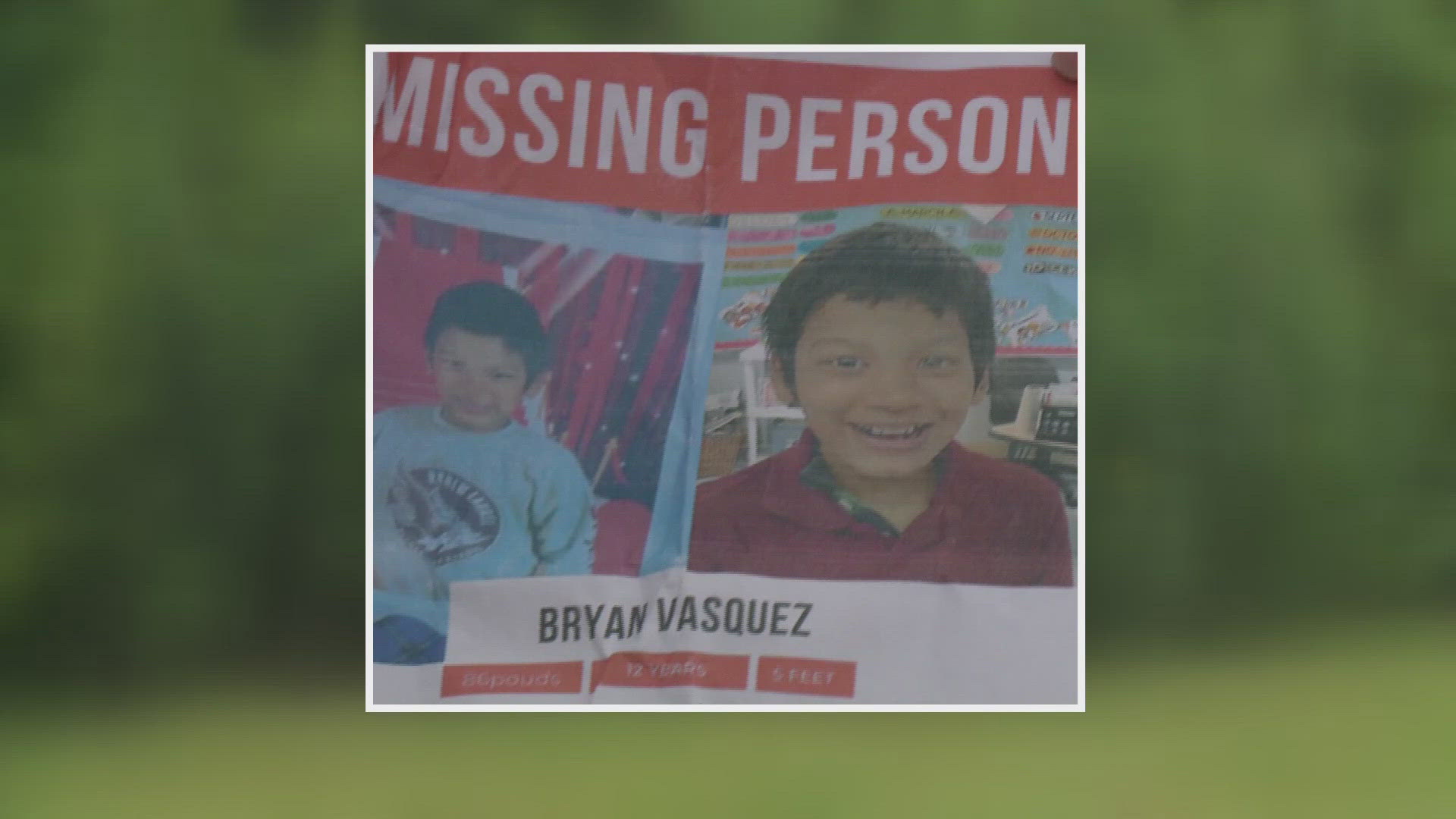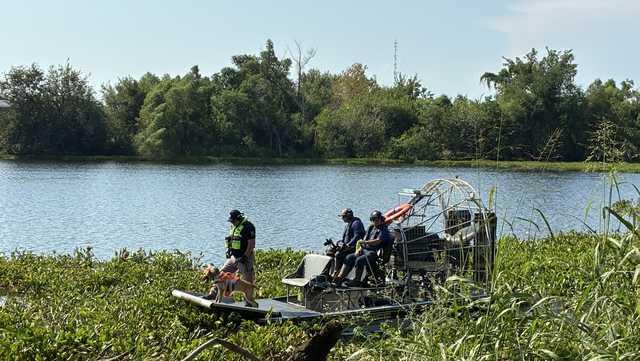Just Now: A Search Drone Spotted Movement Near the Bayou Where Bryan Vanished — What Rescuers Saw Left Everyone Frozen
Introduction
In the early hours of August 24, 2025, a chilling development unfolded in the desperate search for 12-year-old Bryan Vasquez, a non-verbal autistic boy who vanished from his home in New Orleans East on August 14, 2025. The United Cajun Navy (UCN), alongside the New Orleans Police Department (NOPD) and volunteers, has been tirelessly combing the treacherous swamps and canals of Village De L’Est for over ten days. Last night, a thermal-equipped search drone detected movement in the murky waters of a bayou near Bryan’s home, sparking hope and dread in equal measure. When rescuers zoomed in on the footage, what they saw left the team frozen in shock, raising more questions than answers in a case that has gripped the community.

The Disappearance of Bryan Vasquez
Bryan Vasquez, a 12-year-old boy with autism, slipped out of his family’s home on Beaucaire Street through a bedroom window in the early hours of August 14, 2025. Ring camera footage captured him attempting to open a neighbor’s door at 5:20 a.m., and by 6:30 a.m., he was seen a mile away on Sevres Street. His mother, Hilda Vasquez, noted that Bryan, who is non-verbal and prone to seizures, loves water and climbing, often sneaking off to playgrounds. The family’s recent move to the area meant no alarms were installed, leaving a gap in their safety measures. Despite extensive searches involving K9 units, helicopters, and volunteers, no solid leads emerged until the drone footage surfaced.
The terrain in Village De L’Est is unforgiving—swampy woods, weed-choked canals, and wildlife like 12-foot alligators complicate efforts. The NOPD issued a Level II Endangered/Missing Child Advisory, but no Amber Alert was activated due to a lack of abduction evidence. The UCN joined the effort on August 15, deploying thermal drones to scan for heat signatures in areas too dangerous for ground teams. Hilda Vasquez has clung to hope, stating, “He is my life,” and urging anyone who might have her son to return him safely.
The Drone’s Chilling Discovery
On the night of August 23, 2025, the UCN deployed advanced DJI Matrice drones equipped with FLIR thermal sensors, capable of detecting human heat signatures (98.6°F) against the cooler swamp environment. Around midnight, operators monitoring a live feed noticed something unsettling: a five-minute recording captured movement just below the surface of a canal near Bryan’s last known location. The shifting shape, distinct from the surrounding wildlife, prompted an immediate response. “The footage gave us our first real lead in days,” a rescue worker later told reporters, “but no one was prepared for what we saw when we zoomed in.”
As the drone’s high-resolution feed zoomed in, the shadowy movement revealed a form that appeared disturbingly human-like, yet obscured by the murky water and lily pads. The image was grainy but unmistakable—something was there, and it wasn’t an alligator or debris. Divers were dispatched within the hour, plunging into the dark, alligator-infested waters. At nearly three meters below the surface, they made a harrowing discovery described by sources as “terrible” and “potentially decisive.” While authorities have not disclosed the exact nature of the find, the scene was quickly sealed off, and forensic experts were called in, leaving the community on edge.
Community and Official Response
The discovery sent shockwaves through the search teams and Bryan’s family, who were informed but asked to await official confirmation. The NOPD’s Special Victims Division, which took over the case on August 17, scaled down field operations but maintained active canvassing. Detective Mario Bravo emphasized, “The search is still ongoing,” while UCN Vice President Brian Trascher noted the operation’s intensity: “We go full send until somebody tells us not to.” The community, already shaken by days of grueling searches, rallied at the Beaucaire and Lemans intersection, distributing fliers in English, Spanish, and Vietnamese, and urging residents to check yards, sheds, and surveillance footage.
Volunteers like Reggie Hall expressed empathy, stating, “I can only imagine what the parents are going through… let’s hope they find this child alive.” Others, like community activist Rosales-Farjardo, criticized the NOPD’s five-hour delay in responding to the initial call, demanding faster action in future cases. The involvement of multiple agencies—NOPD, St. Bernard and St. Charles Parish Sheriffs, State Police, and the Louisiana Department of Wildlife and Fisheries—underscored the search’s scale, labeled a “rescue” to reflect confidence in finding Bryan alive.
The Role of Thermal Drones
The use of thermal drones has been a game-changer in the search for Bryan. Unlike traditional methods, drones like the DJI Matrice 300, with 640×512 resolution and 55-minute flight times, can cover vast, hazardous areas safely. Their ability to distinguish human heat signatures from wildlife, even through dense vegetation or water, has proven invaluable. “These drones pick up signatures others miss,” Trascher explained, citing their success in previous rescues, such as finding an autistic boy in a cornfield. In Bryan’s case, the drones’ real-time feeds allowed operators to act swiftly, though the outcome remains uncertain.
The discovery also raises broader questions about drone technology in search-and-rescue operations. Costing $20,000-$30,000, these UAVs are equipped with H20T sensors and 10-kilometer ranges, making them ideal for navigating New Orleans’ swamps. Their role in post-Hurricane Ida mapping further highlights their versatility. For the drone community, Bryan’s case is a reminder of the technology’s life-saving potential, as noted by DroneXL’s Rafael Suárez: “This hits home—Bryan’s vulnerability mirrors why I love UAVs: they go where we can’t.”
Unanswered Questions and Speculation

The lack of official details about the divers’ find has fueled speculation. Was it Bryan? A clue to his whereabouts? Or something unrelated, perhaps tied to the mysterious drone sightings reported across the U.S.? Since November 2024, large, unidentified drones have been spotted in states like New Jersey, New York, and California, often near sensitive sites like military bases. While the FBI and Department of Homeland Security insist these pose no threat, the timing of Bryan’s case has sparked theories about a connection. Could the search drone have stumbled upon something larger?
President-elect Donald Trump and lawmakers like New Jersey’s Sen. Cory Booker have demanded transparency about these “mystery drones,” with some sightings reported near Trump’s Bedminster golf club. However, the White House maintains that many sightings are lawful aircraft or even stars mistaken for drones. In Bryan’s case, the drone was a known UCN asset, but the eerie discovery has added a layer of intrigue to an already heart-wrenching story.
Conclusion
As forensic teams analyze the canal find, Bryan’s family and the Village De L’Est community wait in agonizing suspense. The thermal drone’s detection of movement has brought the search closer to a resolution, but the “terrible” discovery has left everyone frozen with uncertainty. Was it a breakthrough or a tragic end? The resilience of volunteers, the power of drone technology, and the community’s unity offer hope, but the bayou’s secrets remain guarded. For now, the NOPD urges anyone with information to call 504-658-6070 or 911. As Hilda Vasquez pleads, “If you have him, just return him safe,” the world watches, hoping for a miracle in the swamps of New Orleans.
Sources: nongnhat.com, dronexl.co, yahoo.com, nola.com

